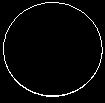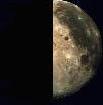 |
 |
 |
 |
November has two major meteor showers, the Taurids and the Leonids and a minor shower of special interest, the Alpha Monocerotids.
The Taurids peak November 5th, but many can been seen in the early days of November and some may even be seen anytime from October 20th through the end of November. The Taurids have a peak rate of 12 meteors per hour, or about one every five minutes on average. Unfortunately the full Moon will completely interfere with the Taurids' peak in 2006.
November also boasts the Leonids, peaking on November 19th. The Leonids meteor shower is probably the most famous meteor shower of all after the high hourly rates of a few years ago. This shower is the result of the Earth's passage through the dust and debris left by the comet 55P/Tempel-Tuttle. Comet 55P/Tempel-Tuttle returns to the inner solar system every 33 years. Each time it passes through our part of the solar system, it leaves a trail of dust along its path. These small grains of dust are what become such bright and beautiful meteors in our skies.
In 2006 the Leonids will certainly not be at meteor storm levels, but there is a reasonably good chance we'll see somewhat higher than average hourly rates, as many as 150 per hour, due to the Earth's passage through a dust stream left during Comet 55P/Tempel-Tuttle's 1932 passage through the inner Solar System. Fortunately the Moon will not obscure any of these meteors for us this year. You should really try to catch the Leonids in 2006 as this is your last chance to observe any heightened Leonid activity for many, many years.
Just a couple days after the Leonids, the Alpha Monocerotids will peak on the 21st. This is a minor shower that has produced large, albeit brief, outbursts in the past, with the last outburst occurring in 1999. While observers around the world may want to watch for an outburst, those in Asia, Eastern Europe, and Eastern Africa are more favored.
I have created a low volume e-mail list for advance notification of upcoming meteor showers and unusual astronomical events; especially those that can be observed with the unaided eye, binoculars, or a small telescope. To join, simply enter your e-mail address below and click on the join now button.
The Heavens on Fire: The Great Leonid Meteor
Storms by Mark Littmann
A well-written book about the Great Leonid Showers and
Storms and it covers the Great Leonid Storm of 1833. This year had an awesome display! The Boston Transcript, in its November 13, 1833
edition, described the storm like this: "Meteor succeeded meteor in such rapid succession that it was impossible to count them;
at times the sky seemed full of them, and the earth was illuminated as with a morning light." If you'd like to read about one
of the best meteor displays in recorded history, then this is a book for you.
Order The Heavens on Fire (paperback)
Order The Heavens on Fire (hardcover)
 |
 |
 |
 |
Return to Meteor Showers in 2006-2007
Return to Celestial Wanderings
Send me e-mail StarWanderer